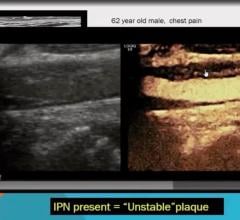January 5, 2022 – A cost-effectiveness model based on peer-reviewed sources suggests that although five-year costs for ...
Stroke
This channel includes news and new technology innovations for stroke. It includes both diagnosis and treatment of stroke, stroke imaging, pharmaceuticals and interventional stroke technologies. Stroke comes in two forms, which have different therapies.
1. Ischemic stoke is a blockage of an artery in the brain, preventing blood flow and is offen referred to as a "brain attack" because it is a similar casue as a heart attack. This type of stroke is often treated with anti-coagulants, including use of tissue plasminogen activator (tPA). Interventional mechanical thrombectomy can also be used to remove the clot.
2. Hemorrhagic stroke is caused when there is bleeding due to a ruptured blood vessel in the brain caused by a brain aneurysm burst or a weakened blood vessels. These strokes are less common, but exact diagnosis is important, because use of tPA in these patients can have catastrophic consequences. Treatments include interventional embolization and surgical clipping of target vessels.
October 15, 2021 — The InspireMD CGuard Embolic Prevention Stent System (EPS) device for the treatment of carotid artery ...
September 7, 2021 — Carotid artery surgery and stenting have comparable long-term effects on fatal or disabling stroke i ...
July 7, 2021 – Robocath, a company that designs, develops and commercializes cath lab robotic solutions to treat ...
Ehtisham Mahmud, M.D., division chief of cardiovascular medicine, director of interventional cardiology and the cardiac ...
May 11, 2021 — The American Institute of Ultrasound in Medicine (AIUM) and the American Society of Echocardiography (ASE ...

(This story was updated May 7, 2021 in the last subheaded section)
April 13, 2021 — The U.S. Food and Drug ...
April 7, 2021 — Market research firm GlobalData's new report, Neurovascular Thrombectomy Devices (Neurology Devices), sh ...
Behnood Bikdeli M.D., a cardiologist at the Brigham and Women’s Hospital, Harvard Medical School, Boston, offers an ...
Interview with Scott E. Kasner, M.D., who served as the principle investigator for the Gore Cardioform REDUCE trial, and ...

A comprehensive review or more than 80 randomized controlled trials (RCTs) investigating how to best manage optimal ...

December 23, 2020 — Three clinical trial platforms working together to test the effects of full doses of anticoagulants ...

December 2, 2020 – Automated deep learning analysis of abdominal computed tomography (CT) images produces a more precise ...
December 1, 2020 – Medical imaging artificial intelligence (AI) vendor Avicenna.AI today announced its FDA-cleared CINA ...
September 11, 2020 — The National Institutes of Health (NIH) has launched two of three adaptive clinical trials ...


 January 05, 2022
January 05, 2022









